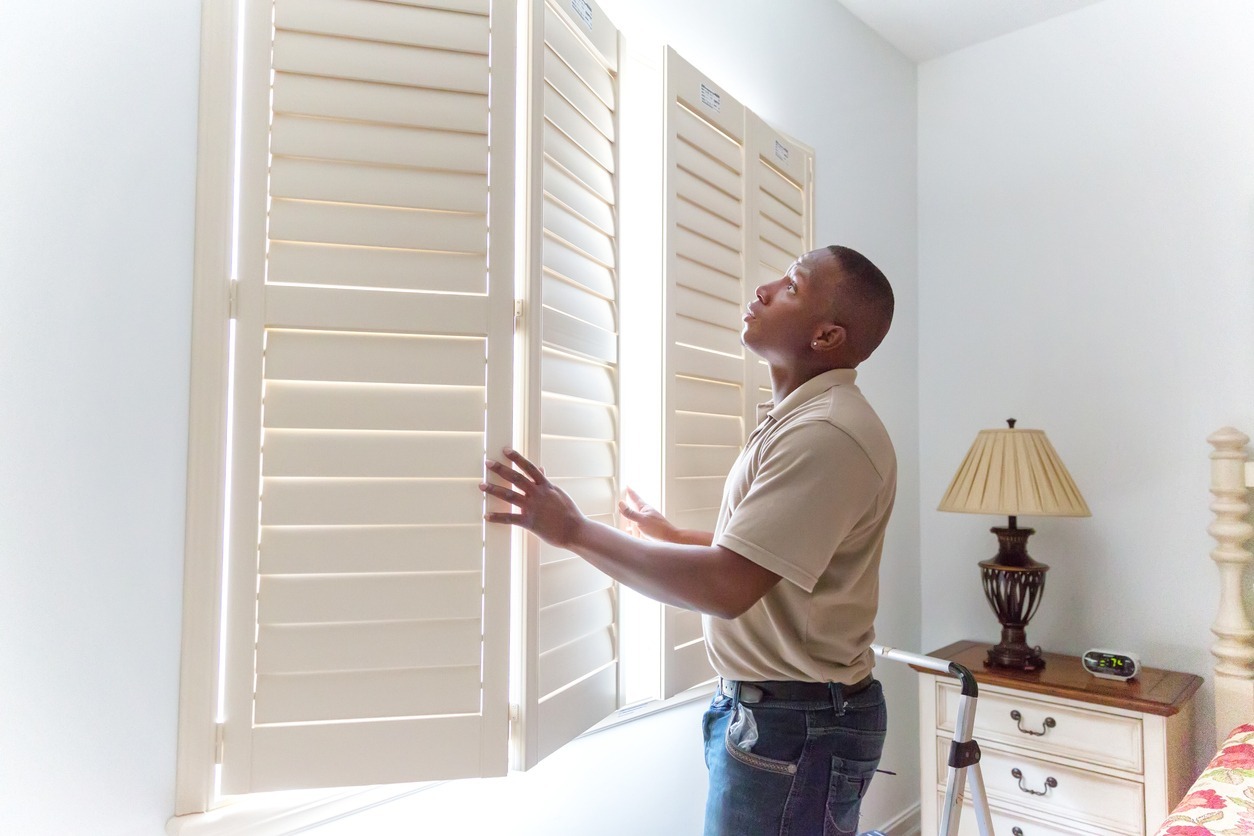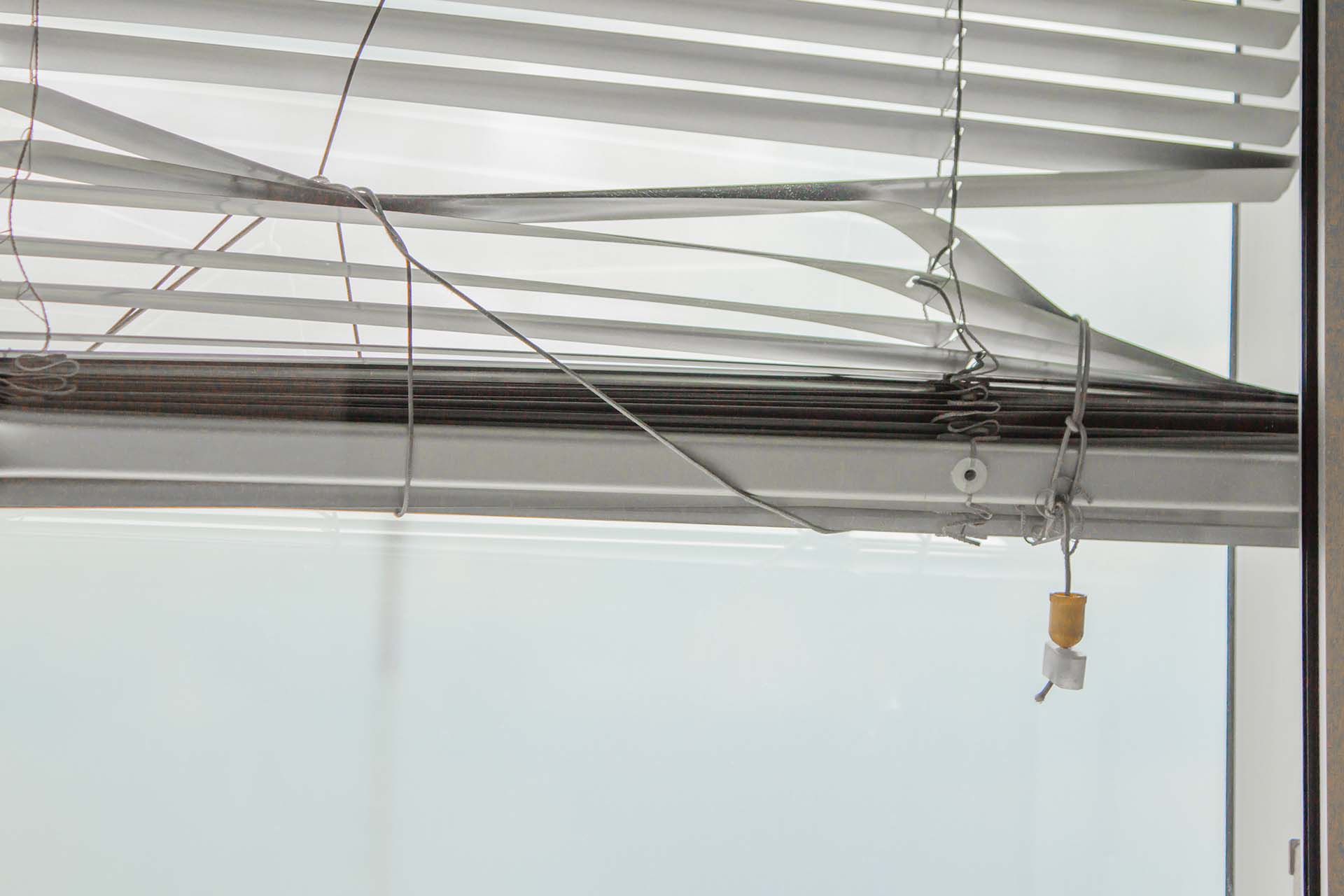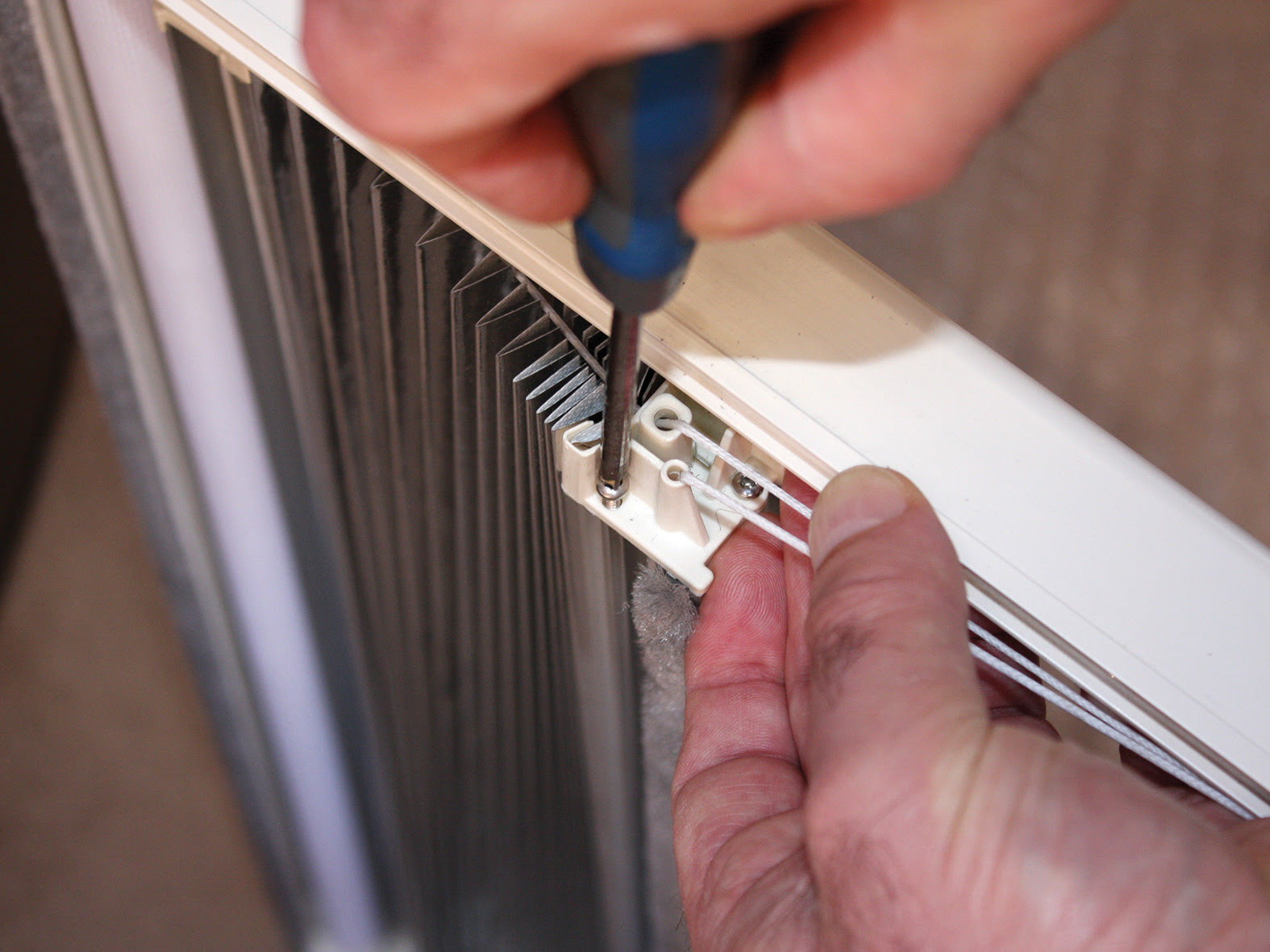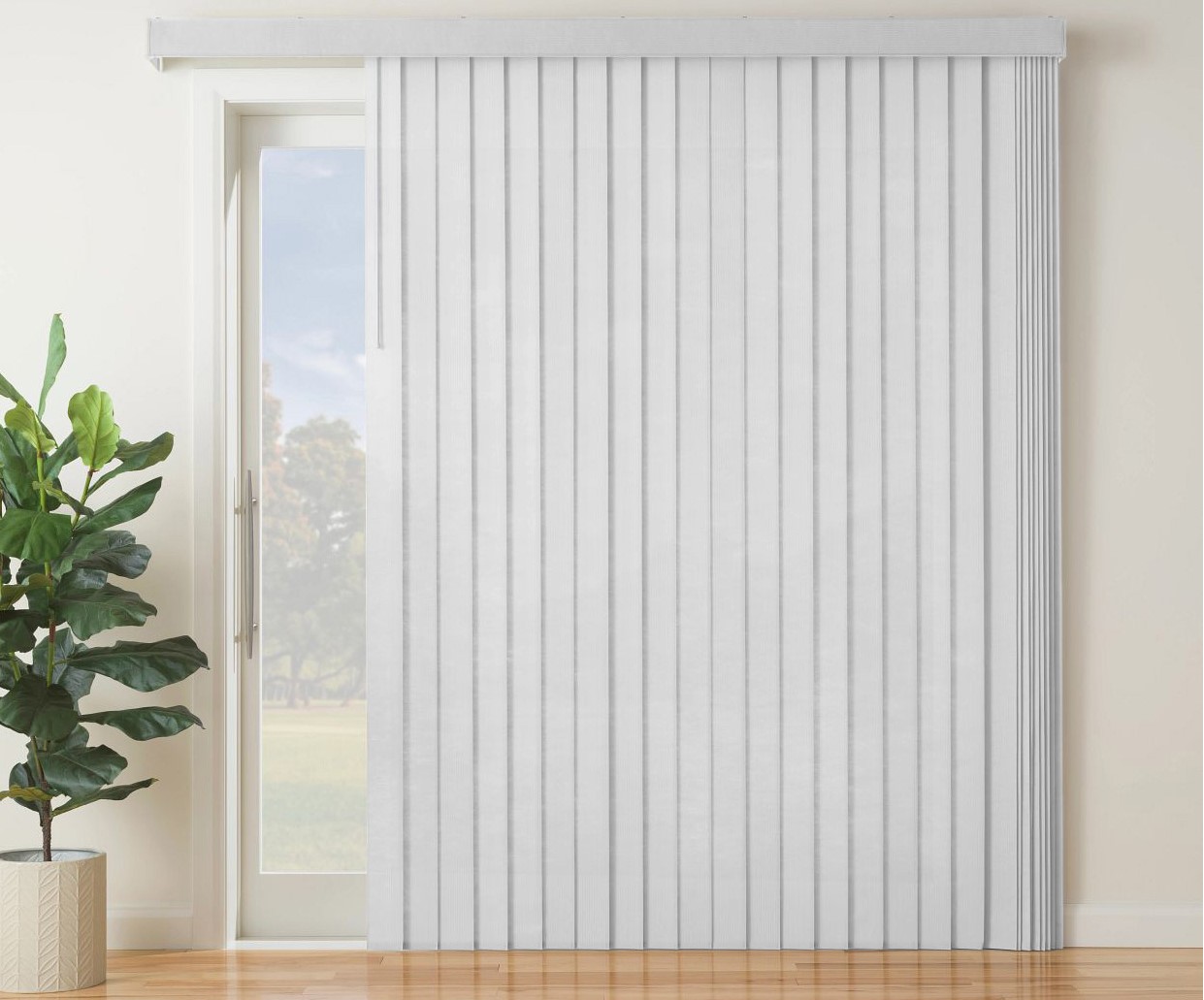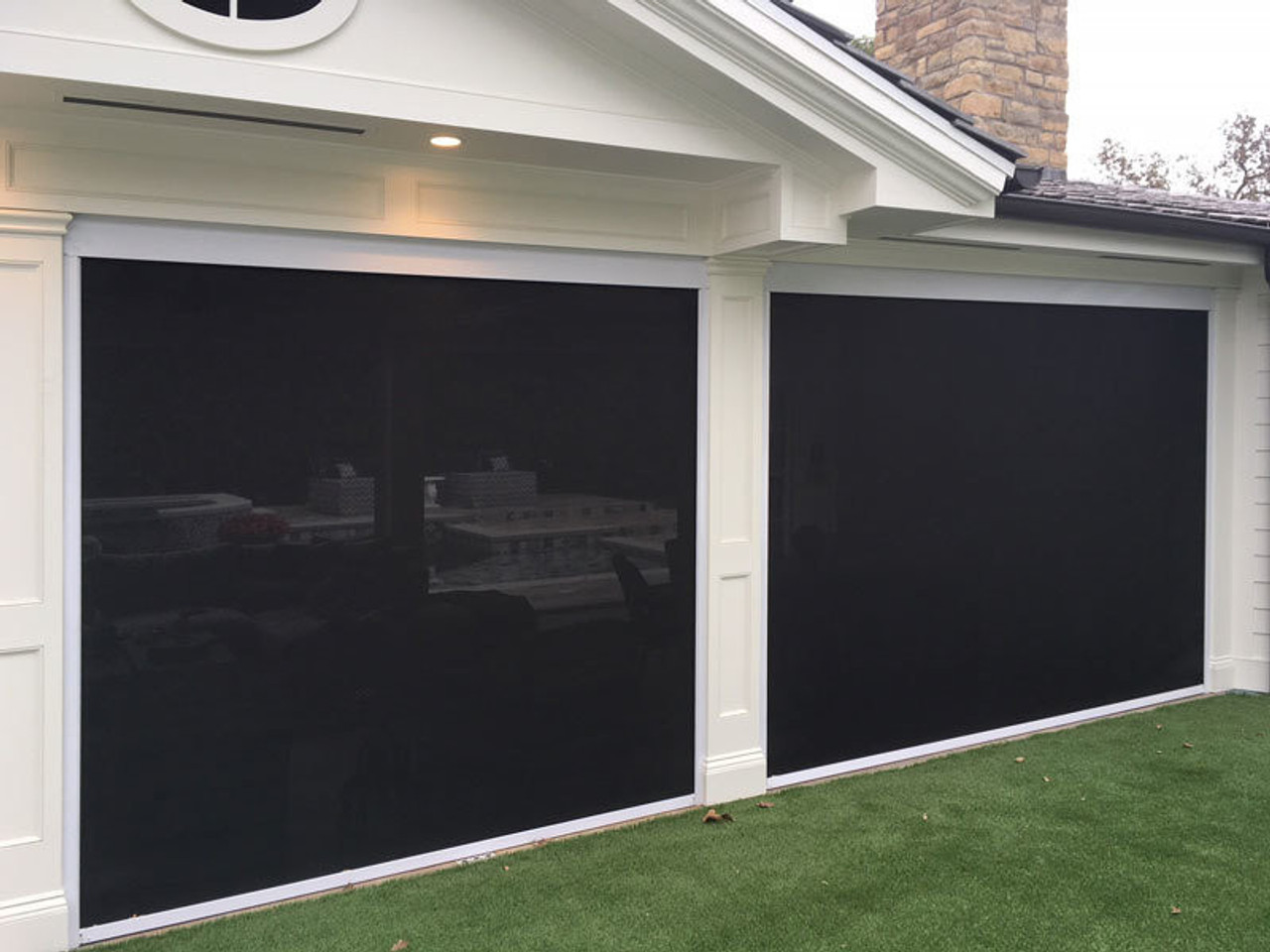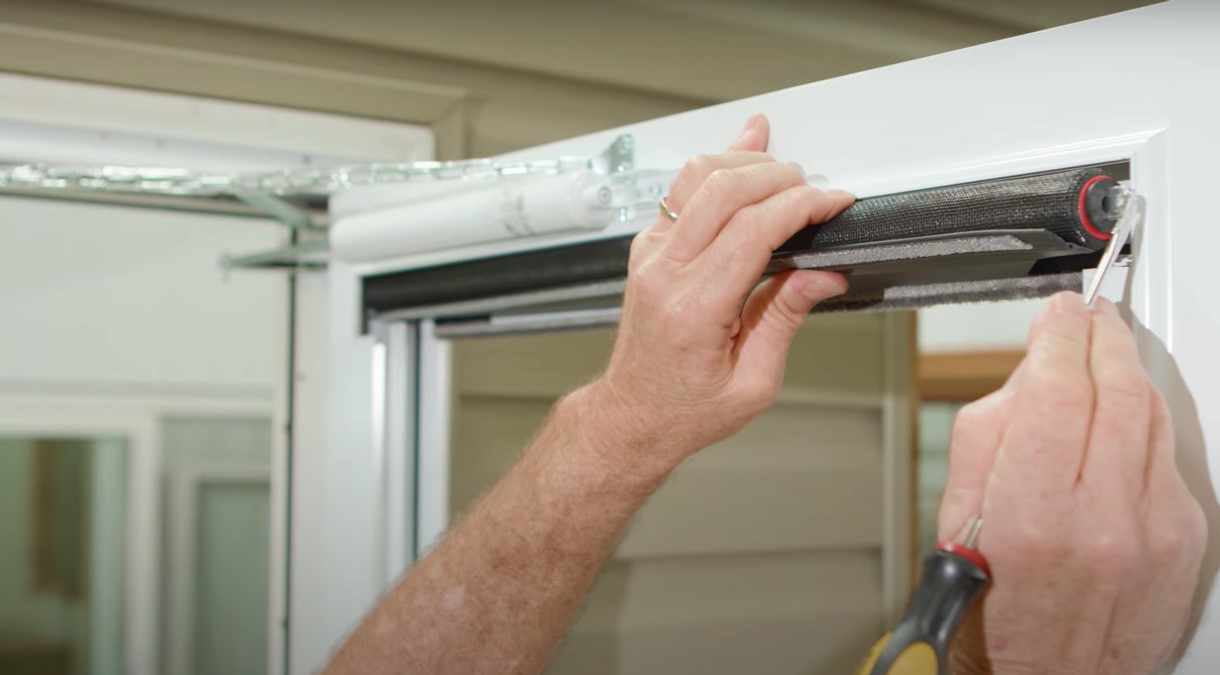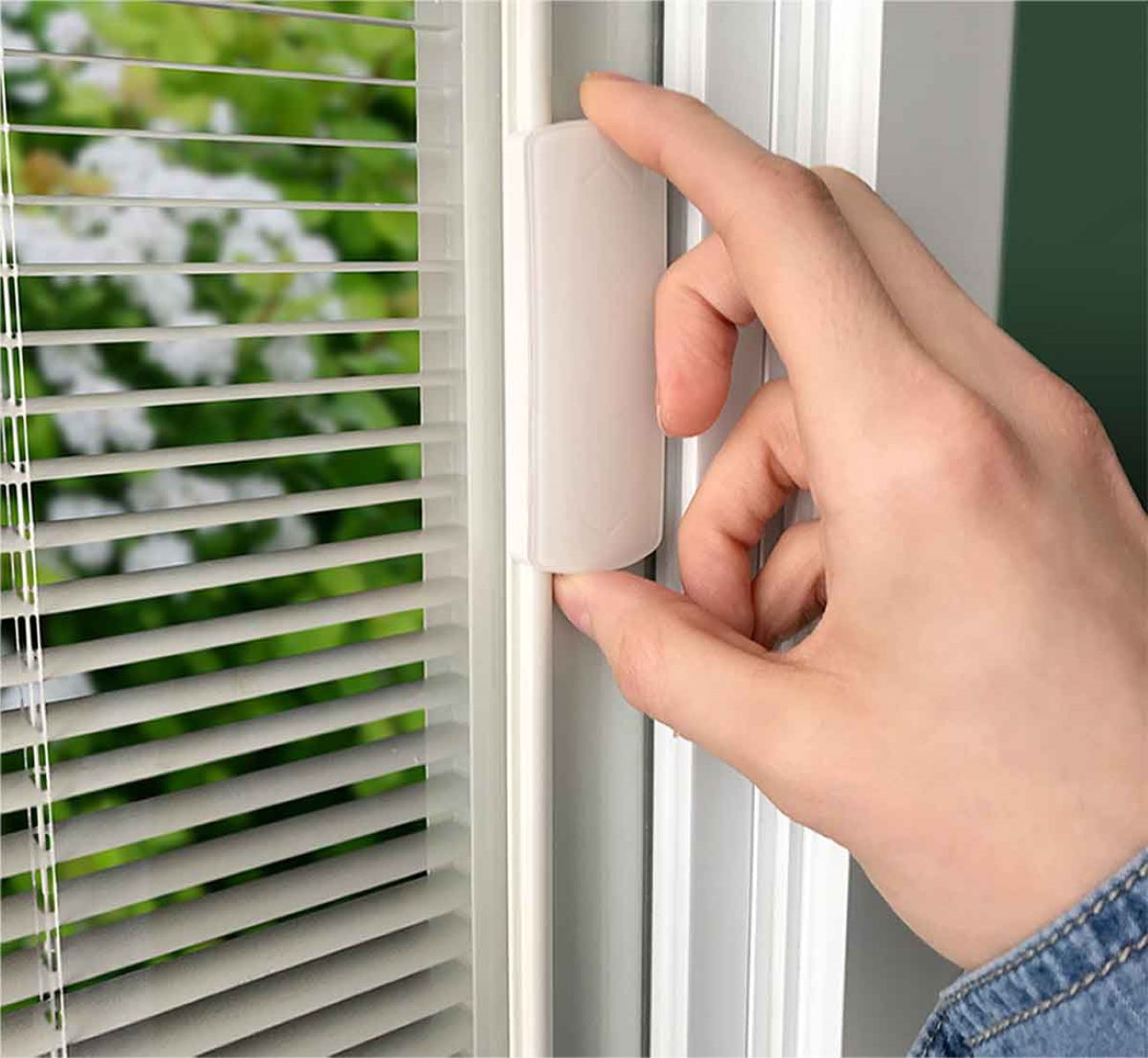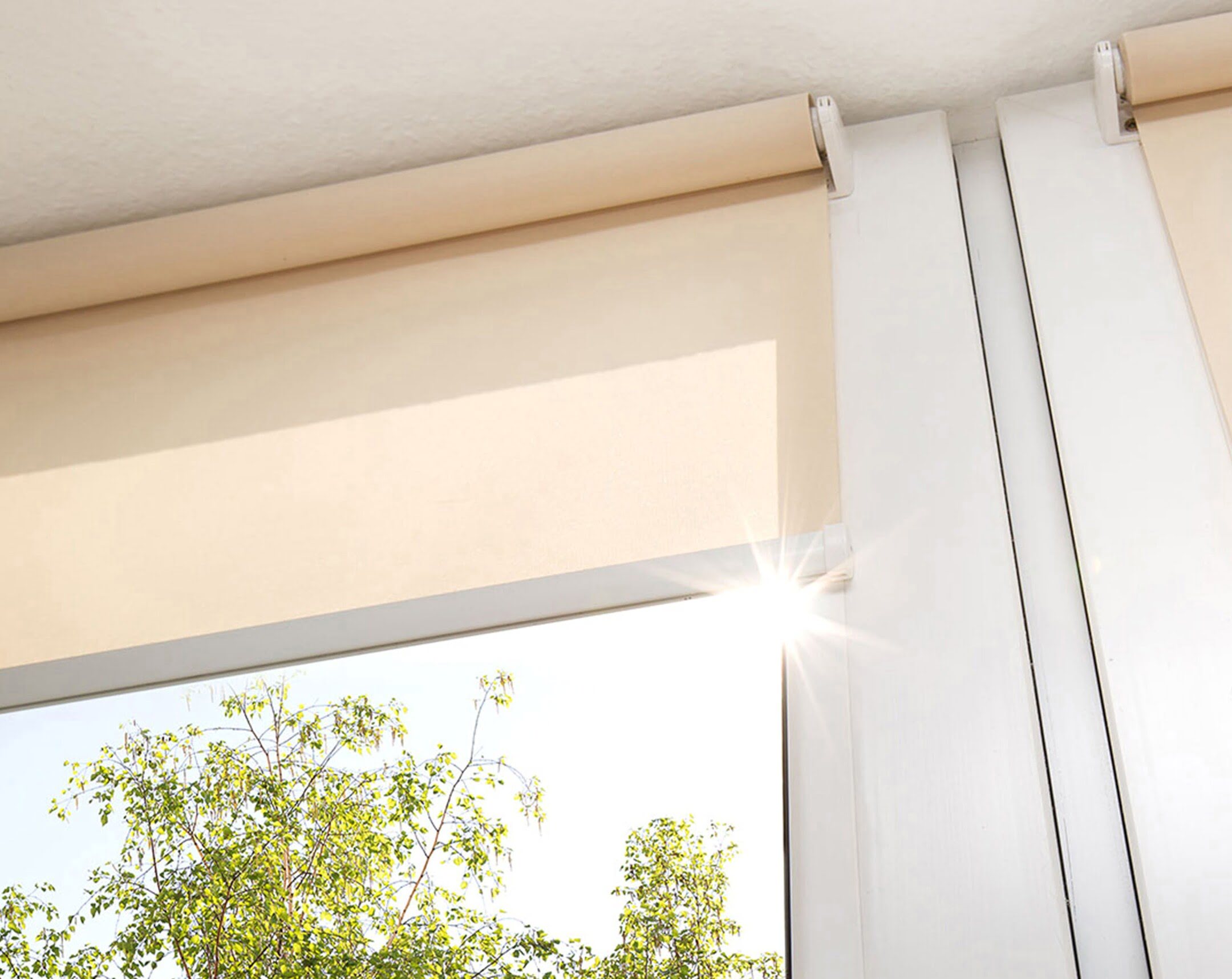

Articles
How To Fix Rolling Blinds
Modified: January 6, 2024
Learn how to fix your rolling blinds with our informative articles. Discover step-by-step guides, troubleshooting tips, and expert advice for a seamless repair.
(Many of the links in this article redirect to a specific reviewed product. Your purchase of these products through affiliate links helps to generate commission for Storables.com, at no extra cost. Learn more)
Introduction
Rolling blinds, also known as roller blinds, are a popular window treatment option due to their simplicity and functionality. With a smooth and efficient rolling mechanism, these blinds allow you to control the amount of light, privacy, and insulation in your home. However, like any other household item, rolling blinds can encounter issues over time. From loose cords to broken springs, these problems can hinder the smooth operation of your blinds.
If you have noticed that your rolling blinds are not functioning as they should, don’t fret! In this article, we will guide you through the process of troubleshooting and fixing common issues with rolling blinds. Whether you have a broken cord, a loose spring, or simply want to give your blinds a thorough cleaning, we’ve got you covered.
Understanding how your rolling blinds work and having the right tools and materials at hand are essential for a successful repair job. With the correct approach and a bit of patience, you can save money and extend the lifespan of your blinds. So, let’s dive in and learn how to fix rolling blinds!
Key Takeaways:
- Understanding the common issues and having the right tools and materials is crucial for fixing rolling blinds. Proper assessment, repair, and maintenance can extend the lifespan of your blinds and save you money in the long run.
- Regular cleaning, lubrication, and testing are essential for ensuring the smooth operation of rolling blinds. By following the step-by-step process, you can restore functionality and enhance the comfort of your home.
Read more: How To Fix Blinds In An Apartment
Understanding the Issue with Rolling Blinds
Before jumping into the repair process, it is important to understand the common issues that can arise with rolling blinds. By understanding the root cause of the problem, you can effectively diagnose and fix the issue.
One common issue with rolling blinds is the presence of loose or damaged components. Over time, constant use and exposure to sunlight can cause screws to loosen, brackets to become misaligned, and cords or strings to fray or break. These issues can lead to difficulties in rolling the blinds up and down smoothly or cause them to get stuck in certain positions.
Another issue you may encounter is an imbalanced tension in the spring mechanism. The spring’s tension is responsible for the controlled rolling and unrolling of the blinds. If the tension is too loose, the blinds may not roll up fully, while if it’s too tight, the blinds may unroll too quickly, causing them to slam shut.
Additionally, dirt, dust, and debris can accumulate on the blinds and within the rolling mechanism, affecting their smooth operation. This buildup can also cause excessive friction, leading to jams or uneven rolling.
Now that you have a better understanding of the common issues with rolling blinds, let’s move on to the next section, where we will discuss the tools and materials you will need to tackle these problems effectively.
Tools and Materials Needed
To successfully repair your rolling blinds, you will need a few essential tools and materials. Gather the following items before you begin:
1. Screwdriver Set: A set of screwdrivers with various sizes and types will help you tighten any loose screws, remove brackets, or access internal components.
2. Pliers: Pliers are useful for pulling and gripping cords or strings, making it easier to repair or replace them.
3. Scissors: A pair of scissors will come in handy for cutting and trimming cords or strings to the correct length during repairs.
4. Replacement Parts: Depending on the specific issue you are facing, you may need to have some replacement parts on hand. This can include new cords, strings, springs, or brackets. Make sure to measure and purchase the correct size and type of replacement parts for your specific blinds.
5. Cleaning Supplies: To remove dust and debris from your blinds, you will need some basic cleaning supplies like a microfiber cloth, gentle cleaner, and water.
6. Lubricant: A silicone-based lubricant or a light household oil can be used to lubricate the rolling mechanism of the blinds, improving their smooth operation.
7. Ladder or Step Stool: If your blinds are installed in a high window, you may need a ladder or step stool to reach them safely.
By having these tools and materials ready, you will be well-equipped to address and resolve the issues with your rolling blinds. Now that you have everything you need, let’s move on to the step-by-step repair process in the next section.
Step 1: Assess the Problem
The first step in fixing your rolling blinds is to assess the problem. By carefully examining the blinds, you can identify the specific issue and determine the best course of action. Here are a few things to look out for during the assessment:
1. Observe the Rolling Action: Test your blinds by rolling them up and down a few times. Pay attention to any resistance, grinding sounds, or uneven rolling. This can indicate issues with the mechanism, such as loose screws or misaligned brackets.
2. Check the Cords or Strings: Examine the cords or strings that are responsible for rolling and unrolling the blinds. Look for any signs of fraying, breakage, or uneven tension. Also, ensure that the cords are properly threaded through the blinds and attached securely to the bottom rail.
3. Inspect the Spring Mechanism: If your blinds have a spring mechanism, check its tension. Gently lift the blinds and observe how they roll up and down when released. If they unroll too slowly or fail to stay in the rolled-up position, the spring tension may be too loose. On the other hand, if they unroll too quickly or with excessive force, the tension may be too tight.
4. Clean the Blinds: Take some time to thoroughly clean the blinds, both the slats and the rolling mechanism. Use a microfiber cloth and a gentle cleaner to remove any dirt, dust, or debris that may be causing friction or hindering smooth operation.
Once you have assessed the problem and identified the specific issues, you can proceed to the next steps to fix your rolling blinds. The following sections will guide you through the repair process for common issues with rolling blinds.
Step 2: Identify the Type of Rolling Blinds
In order to effectively repair your rolling blinds, it is important to identify the type of blinds you have. Different types of rolling blinds may have different mechanisms and components, requiring specific repair methods. Here are some common types of rolling blinds:
1. Standard Roller Blinds: This is the most basic type of rolling blinds, consisting of a single piece of fabric that rolls up and down around a tube or roller at the top of the window. These blinds usually have a simple cord or chain mechanism to control the rolling action.
2. Spring-Loaded Roller Blinds: These blinds have a spring mechanism that controls the rolling and unrolling action. When raised, the blinds retract automatically due to the tension in the spring. A cord or chain is used to release the tension and lower the blinds.
3. Roman Blinds: Roman blinds are a more decorative and elegant style of rolling blinds. They have fabric folds that stack neatly as the blinds are raised and lower when the blinds are lowered. Roman blinds typically use a cord or chain to control the movement.
4. Sheer Blinds: Sheer blinds consist of two layers of fabric with translucent or sheer sections. They create a soft diffused light effect when closed. Sheer blinds can have various rolling mechanisms, such as standard roller blinds or vertical blinds with a weighted bottom rail.
By identifying the specific type of rolling blinds you have, you can search for targeted repair instructions or consult the manufacturer’s guidelines for troubleshooting. This will ensure that you use the correct techniques and tools throughout the repair process.
Once you have identified the type of rolling blinds you own, you can move on to the next steps to diagnose and fix the specific issues with your blinds.
Read also: 15 Best Roll Up Blinds for 2025
Step 3: Check for Loose or Damaged Components
After identifying the type of rolling blinds you have, it’s time to check for any loose or damaged components that may be causing issues with the operation of your blinds. Follow these steps to effectively inspect your blinds:
1. Start by inspecting the brackets: Look for any loose or misaligned brackets that hold the blinds in place. If you find any, use a screwdriver to tighten the screws and ensure a secure fit. If the brackets are damaged or broken, you may need to replace them.
2. Check the screws: Examine all the screws on the blinds, including those on the brackets and other parts of the mechanism. Tighten any loose screws to ensure a stable and secure structure.
3. Inspect the cords or chains: Examine the cords or chains that control the rolling action of the blinds. Look for any signs of fraying, breakage, or uneven tension. If you find any damaged cords or chains, you will need to replace them. If the tension in the cords or chains seems uneven, adjust it later in the repair process.
4. Test the bottom rail: Gently tug and move the bottom rail of the blinds to check if it is securely attached. Ensure that it is balanced and moves smoothly without any sticking or resistance.
5. Check the roller mechanism: If you have standard roller blinds, inspect the roller mechanism at the top of the blinds. Ensure that it rotates smoothly without any obstruction. If there is any visible dirt or debris, clean it off using a soft cloth or brush.
By checking and addressing any loose or damaged components, you can improve the overall functionality of your rolling blinds. In case you encounter any issues that require replacement parts, make a note and proceed to the next steps for repair or replacement.
To fix rolling blinds, start by removing the blinds from the window. Then, inspect the mechanism for any obstructions or damage. Clean and lubricate the mechanism, and reassemble the blinds. If the problem persists, consider replacing the mechanism or seeking professional help.
Step 4: Adjust the Tension of the Spring
If your rolling blinds have a spring-loaded mechanism, adjusting the tension of the spring may be necessary to ensure smooth operation. Follow these steps to adjust the tension:
1. Assess the current tension: Raise the blinds fully and observe how they unroll when released. If the blinds unroll too slowly or fail to stay rolled up, the tension may be too loose. Conversely, if the blinds unroll quickly and with excessive force, the tension may be too tight.
2. Locate the spring tension adjuster: Look for a small screw or knob near the spring mechanism. This adjuster controls the tension of the spring.
3. Tighten the tension: To tighten the tension, turn the screw or knob clockwise using a screwdriver or your fingers. Make small adjustments at a time and test the blinds after each adjustment. Continue tightening until the desired tension is achieved.
4. Loosen the tension: If the tension is too tight, you can loosen it by turning the screw or knob counterclockwise. Again, make gradual adjustments and test the blinds to find the optimal tension.
5. Test the blinds: After making the necessary adjustments, test the blinds by raising and lowering them a few times. Ensure that they unroll smoothly, stay in position when desired, and roll up evenly and securely.
6. Fine-tune if needed: If the blinds still do not operate smoothly or if you are unable to achieve the desired tension, you may need to repeat the adjustment process or seek professional assistance.
Properly adjusting the tension of the spring mechanism will help your rolling blinds operate efficiently and extend their lifespan. Once the tension is adjusted, you can move on to the next steps to address any other issues with your blinds.
Step 5: Repair or Replace Broken Strings or Cords
If you have identified that the issue with your rolling blinds lies with broken or damaged strings or cords, it’s time to repair or replace them. Follow these steps to fix the problem:
1. Measure and cut the replacement cords: Start by measuring the length of the broken cords or strings. Use scissors to cut new cords or strings to the same length as the ones you are replacing. Ensure that they are of the same thickness and material for optimal performance.
2. Remove the old cords or strings: Locate the bottom rail of the blinds and remove any caps or plugs that hold the cords or strings in place. Carefully pull out the old cords or strings, remembering the order in which they were threaded through the blinds.
3. Thread the new cords or strings: Begin threading the new cords or strings through the holes or hooks in the bottom rail, following the same pattern as the old ones. Refer to any markings or diagrams provided by the manufacturer to ensure correct threading.
4. Attach the cords or strings: Once the new cords or strings are threaded through the bottom rail, reattach the caps or plugs to secure them in place. Make sure they are tightly secured to prevent any slippage or unraveling.
5. Adjust the tension: If the new cords or strings appear loose, you may need to adjust their tension. Refer to the manufacturer’s guidelines or consult a professional for specific instructions on adjusting tension for your particular blinds.
6. Test the blinds: After replacing the broken cords or strings and adjusting their tension, test the blinds by raising and lowering them several times. Ensure that they roll up and down smoothly without any snagging or irregularities.
7. Make any necessary fine-tuning: If the blinds still do not function properly or if the new cords or strings are too tight or loose, make small adjustments to achieve the desired tension.
By repairing or replacing broken strings or cords, you can restore the rolling function of your blinds and ensure their proper operation. If you encounter any difficulties during this process, do not hesitate to seek professional assistance.
Step 6: Clean and Lubricate the Blinds
Cleaning and lubricating your rolling blinds is an important step in maintaining their smooth operation. Over time, dust, dirt, and debris can accumulate on the blinds, causing friction and hindering their ability to roll up and down properly. Follow these steps to clean and lubricate your blinds:
1. Dust off the blinds: Start by using a soft, dry cloth or duster to gently remove any loose dust or debris from the blinds. Pay attention to both the front and back surfaces of the blinds, as well as the edges and corners.
2. Spot clean any stains or marks: If you notice any stubborn stains or marks on the blinds, you can spot clean them using a mild detergent or a solution of water and vinegar. Dampen a cloth with the cleaning solution and gently blot the affected areas. Avoid saturating the blinds with excessive liquid.
3. Clean the rolling mechanism: Use a microfiber cloth or a soft brush to clean the rolling mechanism. Gently wipe or brush away any dirt, dust, or debris that may have accumulated. Be careful not to apply too much pressure or force, as this may damage the mechanism.
4. Lubricate the rolling mechanism: Apply a small amount of silicone-based lubricant or a light household oil to the moving parts of the rolling mechanism. This will help reduce friction and ensure smooth operation. Use a cloth or a small brush to evenly distribute the lubricant.
5. Wipe away any excess lubricant: After applying the lubricant, use a clean cloth to wipe away any excess. Be sure to remove any visible residue to prevent attracting more dust or debris.
6. Test the blinds: Once you have cleaned and lubricated the blinds, test their operation by rolling them up and down several times. Pay attention to how smoothly they move and if there are any improvements in their functionality.
Regularly cleaning and lubricating your rolling blinds will help maintain their performance and prolong their lifespan. It is recommended to perform this maintenance step at least once or twice a year, or as needed, depending on the environment and usage of the blinds.
Read more: How To Fix Magnetic Blinds
Step 7: Test and Adjust the Blinds
After completing the repair, cleaning, and lubrication process, it’s important to thoroughly test your rolling blinds to ensure they are functioning properly. Follow these steps to test and adjust your blinds:
1. Roll up and down: Start by rolling the blinds up and down a few times to test their smoothness and stability. Observe if they move evenly and without any resistance or jerky motions.
2. Check for alignment: Take a moment to inspect the blinds from the front and side views. Ensure that they are aligned correctly and roll up and down in a straight and even manner. Adjust any misalignment by gently guiding the blinds while rolling them up or down.
3. Test the locking mechanism (if applicable): If your blinds have a locking mechanism that holds them in position, such as a cord lock or a cord cleat, test its functionality. Engage and disengage the lock to verify if it securely holds the blinds in place when desired.
4. Adjust cord or chain length (if necessary): If the cords or chains controlling the blinds are too long or too short, you can adjust their length for better functionality. Refer to the manufacturer’s guidelines or consult a professional for the proper technique to adjust the length for your specific blinds.
5. Fine-tune the tension (if needed): Pay attention to the tension of the cords or springs and make further adjustments if necessary. Ensure the blinds stay in the desired position when rolled up or down, and that they do not unroll too quickly or with excessive force.
6. Take note of any remaining issues: If you notice any lingering issues or problems with your rolling blinds during the testing phase, make a note of them for further investigation. It may be helpful to consult with a professional or the manufacturer for specific guidance on resolving these issues.
By thoroughly testing and adjusting your rolling blinds, you can ensure their proper functionality and enjoy smooth and hassle-free operation. Regularly perform these tests and adjustments as part of your routine maintenance to keep your blinds in optimal condition.
Conclusion
Fixing rolling blinds may seem like a daunting task, but with the right knowledge and tools, you can tackle common issues and restore their functionality. By following the step-by-step process outlined in this article, you can assess the problem, identify the type of rolling blinds, check for loose or damaged components, adjust the tension of the spring, repair or replace broken strings or cords, clean and lubricate the blinds, and finally, test and adjust their operation.
Taking the time to properly maintain and repair your rolling blinds not only improves their performance but also extends their lifespan. This saves you money in the long run by avoiding costly replacements. Additionally, functional blinds enhance the overall appearance and comfort of your home, allowing you to control light, privacy, and insulation effectively.
Remember, safety is paramount when working with blinds. Always exercise caution and follow manufacturer guidelines or consult professional assistance if needed. Working at heights or in complex systems may require specialized knowledge and tools to ensure a safe repair process.
In conclusion, don’t let issues with your rolling blinds leave you feeling frustrated. With the information and steps provided in this article, you can confidently address common problems and restore your blinds to their optimal condition. Enjoy the benefits of smoothly rolling blinds, and bask in the control they offer over lighting and privacy in your home.
Frequently Asked Questions about How To Fix Rolling Blinds
Was this page helpful?
At Storables.com, we guarantee accurate and reliable information. Our content, validated by Expert Board Contributors, is crafted following stringent Editorial Policies. We're committed to providing you with well-researched, expert-backed insights for all your informational needs.
